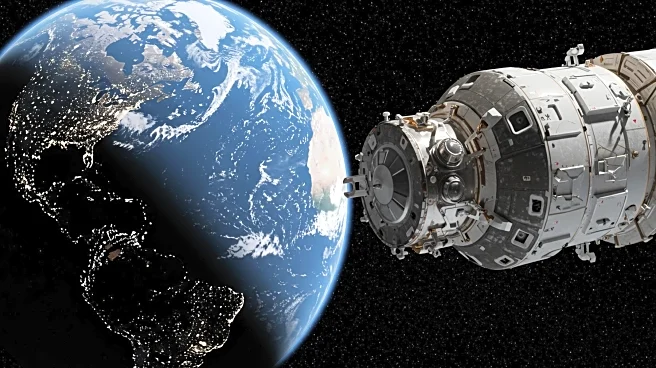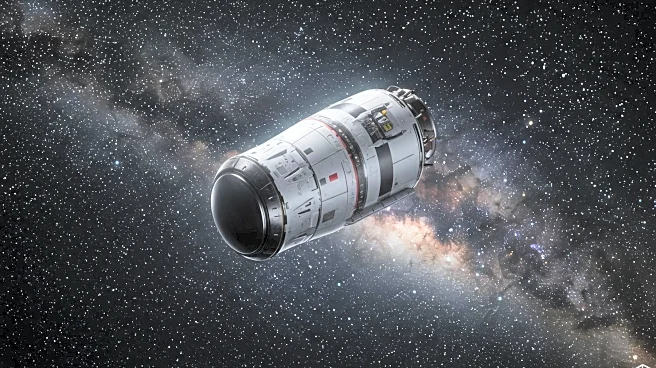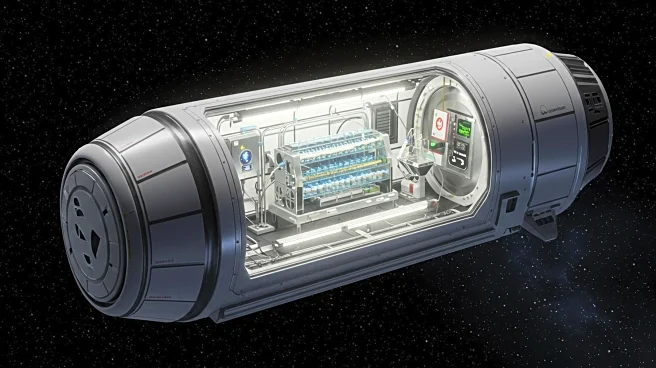What is the story about?
What's Happening?
NASA is advancing preparations for the launch of the Interstellar Mapping and Acceleration Probe (IMAP) spacecraft, which is set to explore the heliosphere's boundaries. Technicians have moved the IMAP observatory to a clean room at the Astrotech Space Operations Facility near NASA's Kennedy Space Center in Florida, where they loaded over 317 pounds of hydrazine into the spacecraft's tanks. This propellant will enable the spacecraft's propulsion system to control its attitude, adjust its spin rate, and maintain its trajectory. The IMAP mission aims to provide real-time observations of solar wind and energetic particles, contributing to a better understanding of space weather conditions.
Why It's Important?
The IMAP mission is significant for advancing scientific knowledge about the heliosphere, a protective bubble created by the Sun's wind that shields the solar system from cosmic radiation. Understanding the heliosphere's interaction with the local galactic environment is crucial for space exploration and protecting Earth-based technologies from space weather effects. The mission's findings could have implications for future space travel and the safety of astronauts. Additionally, the collaboration with NOAA and the inclusion of rideshare payloads highlight the importance of inter-agency cooperation in maximizing the scientific return of space missions.
What's Next?
The IMAP spacecraft, along with its rideshare payloads, is scheduled to launch on a SpaceX Falcon 9 rocket no earlier than September from Launch Complex 39A at NASA Kennedy. Following the launch, the spacecraft will travel to Lagrange point 1, where it will begin its mission to map the heliosphere. The data collected by IMAP will be analyzed by scientists to enhance understanding of solar and cosmic phenomena, potentially leading to new insights into the dynamics of our solar system's boundary.
AI Generated Content
Do you find this article useful?












